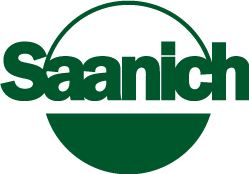This year's tree giveaway is completed. Thank you to all residents who picked up their free tree and planted it on their properties - you are all contributing to growing Saanich's urban forest!
Stay tuned for our 2025 offering.
In celebration of National Tree Day, we offer residents a FREE tree to plant on your private property.

Trees are handed out on National Tree Day in late September. Parks staff will be onsite to provide trees to pre-registered Saanich residents and provide tree planting and aftercare information. A pick up reminder email will go out to all pre-registered participants prior to the event.
Who qualifies for a FREE tree?
- Must be a Saanich resident
- One tree per household
- Trees are to be planted on private land not in municipal Parks or boulevard
- Giveaway trees are not to be counted as "replacement trees" for an active Tree Cutting Permit
How do I sign up for a FREE Tree?
Pre-registration details will be here when available.
What Tree Species can I select for my FREE tree?
- Pacific Serviceberry is a deciduous shrub or small tree growing 7 meters (23'). White flowers in the early spring give way to dark purple pomme fruits in summer. These berries are enjoyed by both wildlife and people, and the fruits can be eaten fresh or dried. They adapt well, but heavy clay and wet soils should be avoided.
- Black Hawthorn a small tree native to British Columbia growing to about 8 meters (26’) that have white showy flowers in clusters in early spring, but they also don sharp thorns, about 3 cm long. Their leaves are thick and leathery and the black drupe fruit forms in the summer and provide food for birds in the winter. They grow best in full sun conditions.
- Shore Pine is an evergreen tree which grows to a height of 15 meters (49’) in a somewhat sprawling and irregular form. This native conifer grows along the Pacific Ocean shorelines. Shore Pine is highly adaptable to many soil conditions, wet or dry.
- Garry Oak is a slow growing native tree reaching up to 20 meters (65') at maturity, with an open spreading canopy. The acorns are consumed by local wildlife, and in undisturbed sites many native wildflowers can be found in their surrounding ecosystem. This is an extremely drought tolerant tree.
- Pacific Crab Apple is a small tree growing to 12 meters (39') tall. Spring blooms have an apple-blossom scent and appear in clusters in the early season. Pacific crab apple grows along the British Columbia coast and do best in areas with moist soils.
- Vine Maple is a small deciduous tree, sometimes reaching 6 meters (19') with sprawling branches. Inconspicuous flowers will form interesting samaras, or small ‘helicopters’. Vine maple shows brilliant red autumn foliage colour and prefers moist or wet and semi-shaded planting sites. Planted in recent years as a showy native urban planting in sites with smaller rooting zones.
- Douglas Maple is a small native deciduous tree, growing up to 7 meters (23') in height, with dark green foliage which turns to bright yellow-orange into crimson in the autumn. This tree has larger bunches of samaras throughout the summer and autumn and can tolerate somewhat drier soils than the vine maple. Douglas maple can tolerate sun or semi-shade planting sites.
- Douglas Fir is one of our largest maturing conifers reaching soaring heights of up to 85 meters (278'). Douglas fir is tolerant of a wide range of soil type, exposure and elevation. The dark green foliage of the Douglas fir acts as the steady and consistent back drop for much of Vancouver Island and plays an essential ecology supporting role in our forests and landscapes. Many animals rely on Douglas-fir seeds and the tree provides habitat for many native birds.
- Western Redcedar is a large-maturing evergreen tree growing up to 60 meters (196') tall when mature, with scale-like leaves arranged in fan-like sprays. Branches tend to spread or droop slightly then turn upward with lush, verdant scale-like foliage. Western redcedars tend to thrive in moist to wet and nutrient rich soils and can tolerate shade.

